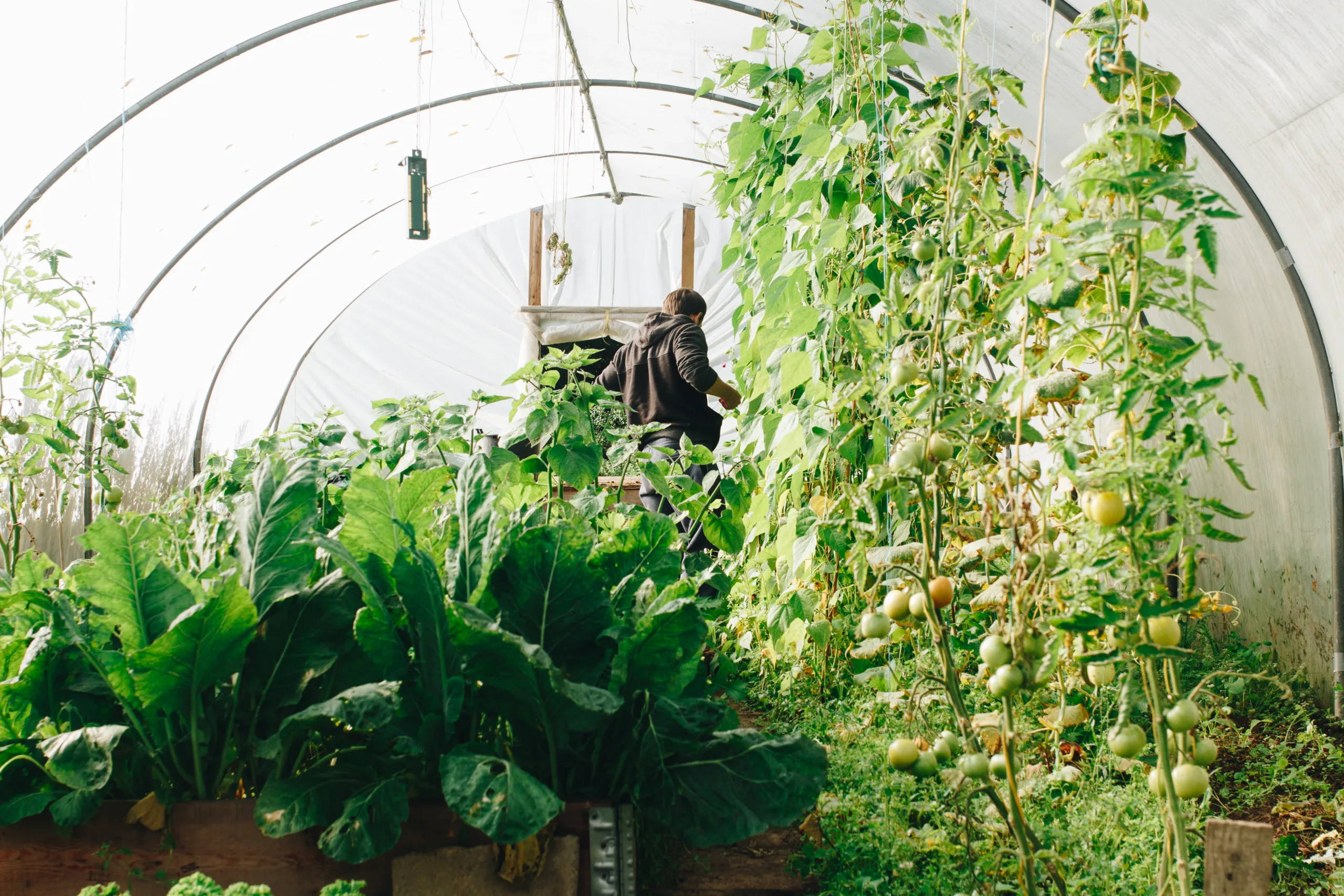Do you have a willow tree in your garden and wonder if they have deep roots?
It can be concerning to have a large tree in the backyard when you don’t know how far down its roots will go. Knowing how deep the roots of a willow tree grow can help you determine if it will interfere with sidewalks, underground utilities, or other trees on your property. This article will answer all your questions about the root systems of willow trees so you can make an informed decision when caring for them.
Willow trees are typically characterized by long, slender leaves, drooping branches, and a bark that is often smooth, gray-brown or silvery in color. They can grow to heights of up to 40 feet tall and have a wide spreading canopy. Willow trees are also known for their rapid growth rate and their ability to thrive in wet conditions. Their wood is lightweight and pliable making it ideal for weaving baskets or crafting furniture.
Types of Willow Trees
Willow trees are among the most beloved and recognizable of all trees, found in parks, gardens, and yards across the globe. Willows come in many varieties, each of which has its own unique features and characteristics. The most common types of willow trees include weeping willow, white willow, black willow, and peachleaf willow.
The weeping willow is probably the best known type of willow tree. It is characterized by its long, narrow leaves that droop downward from the branches. Weeping willows can grow up to 50 feet tall and their leaves range in color from bright green to deep purple. These trees are often planted near ponds or streams as they are excellent sources of shade and their drooping branches provide a calming effect.
The white willow is another popular type of willow tree. It is native to Europe and Asia but can be found in other parts of the world as well. White willows have a light gray bark with white-green foliage that turns yellow in autumn. These trees grow up to 30 feet tall and are often used as windbreaks or privacy screens due to their tall height and dense foliage.
Black willows are a type of tree that is native to North America but can be found elsewhere as well. They have dark gray bark with long pointed leaves that are dark green in color. Black willows grow up to 40 feet tall and produce bright yellow flowers in springtime. They prefer moist soil conditions so they are commonly found near rivers or creeks where there is plenty of water for the roots to absorb.
Finally, the peachleaf willow is a type of tree that has been cultivated for centuries for its ornamental value. Its leaves are a deep green color with a peach-colored hue on their undersides; this gives them their name “peachleaf”. Peachleaf willows typically grow up to 25 feet tall with an upright habit and an open canopy that allows sunlight through its branches easily. These trees make excellent shade trees due to their dense foliage and broad canopy shape.
Growth Habits of Willow Trees
Willow trees are deciduous trees that have a fast growth rate and have an upright, rounded or pendulous habit. These trees can reach heights of up to 40 feet and tend to grow in moist areas, such as near lakes and streams. The bark of these trees is gray and smooth, while their leaves are long and narrow with pointed tips. The flowers produced by willow trees can be yellow, pink, or white in color.
Willow trees are fairly easy to propagate from cuttings, either through rooting them directly in soil or by soaking them in water first. They tend to be quite hardy and can tolerate a wide range of soils and climates with ease. They prefer full sun but do not require it and can tolerate partial shade as well.
Willow tree branches are often used for weaving baskets, creating furniture, building structures, making sporting equipment, and for many other crafts. In addition to being used for decorative purposes, the wood from these trees is also used for fuel or as an ingredient in natural medicines.
When it comes to caring for willows, they do best when watered regularly during the growing season but should not be over-watered as this can lead to problems with root rot. Pruning should usually be done after flowering has finished so that the flowers have time to set seed before being pruned off. Fertilizing should also be done at least once per year with a balanced fertilizer such as 10-10-10 fertilizer.
Overall, willow trees are fairly easy to care for and make great additions to any landscape due to their attractive foliage and fragrant blooms. With proper care they can provide many years of enjoyment while also providing an array of useful products from their branches and wood.
Soil Requirements for Willow Trees
Willow trees have specific soil requirements in order to thrive. They require moist, nutrient-rich soils that are well-draining, yet not overly sandy or rocky. The ideal pH range for willow trees is between 5.5 and 8.0. They grow best in fertile loam or clay soils that are consistently moist, but not waterlogged. Additionally, a layer of organic material should be added to the surface of the soil to help retain moisture and provide nutrients. Mulching with bark chips or compost is also beneficial for preventing weeds and helping the soil retain moisture during dry periods. Willow trees can also tolerate some salt in their soil, making them suitable for coastal sites and places where salinity levels are high.
Willows do not do well in extremely dry soils or those with heavy clay content; they need moist conditions to thrive and will quickly succumb to drought stress if their roots become too dry. If planting these trees in an area where water is limited, it is important to provide supplemental irrigation during extended periods of drought and hot weather. Using soaker hoses or drip irrigation systems can help ensure your willow tree gets the moisture it needs without wasting water through evaporation.
Water Requirements for Willow Trees
Willow trees are known for their hardy nature, but they also require consistent and adequate water to thrive. As a semi-aquatic species, willow trees appreciate frequent waterings and occasional flooding from periods of heavy rain. It’s important to monitor the moisture content of the soil surrounding the tree and ensure that it is consistently moist but not overly saturated. Most willow trees prefer wetter conditions than other species, so it’s important to consider this when planting them. In areas where rainfall is scarce, supplemental waterings may be necessary. The amount of water needed can vary depending on the species of willow tree, as well as local climate conditions. Additionally, newly planted willow trees may require more frequent waterings than established ones. To ensure that a willow tree has adequate moisture levels, it’s best to install an irrigation system or use a soaker hose to provide steady water flow throughout the growing season.

Nutritional Requirements for Willow Trees
Willow trees require a variety of essential nutrients to grow and thrive. These include nitrogen, phosphorus, potassium, calcium, magnesium, sulfur, boron, zinc, copper and iron. Nitrogen is especially important for willow trees as it helps promote healthy foliage growth and increases resistance to disease. Phosphorus helps with root and stem development while potassium assists with cell division and water regulation. Calcium helps strengthen the cell walls of willow trees while also aiding in the uptake of other essential nutrients. Magnesium is necessary for chlorophyll production while sulfur helps promote strong root systems. Boron helps with cell growth while zinc is important for photosynthesis. Copper aids in the production of enzymes while iron increases stress tolerance in willow trees.
To ensure proper nutrition for willow trees it’s important to provide a balanced supply of these essential nutrients. The best way to do this is by regularly fertilizing the soil surrounding the tree with a balanced fertilizer formulated specifically for trees. Additionally supplementing the soil with compost or mulch can help provide an additional boost of nutrition as well as improve soil structure and water retention. It’s also important to monitor your willow tree’s environment for potential nutrient deficiencies such as yellowing leaves or stunted growth which may indicate that your tree isn’t receiving enough of one or more essential nutrients. If you notice any signs of deficiency it’s best to consult with an arborist or horticulturalist who can advise you on how best to remedy the situation.
Pruning and Maintenance of Willow Trees
Willow trees are a beautiful addition to any landscape, but they require regular maintenance and pruning to keep them healthy and looking their best. Pruning willow trees is an important step in keeping them healthy, as it helps to promote new growth and remove dead or diseased branches. It is also important for aesthetic purposes, as the shape of a willow tree can be drastically altered with improper pruning.
When pruning a willow tree, it is important to remember that they typically have an outward-growing habit. This means that when pruning, you should make cuts at the tips of branches rather than inside the tree’s canopy. Also, avoid cutting too much off at once as this can cause shock to the tree and lead to dieback. It is better to make several small cuts over time than one large cut.
In addition to regular pruning, it is also important to fertilize a willow tree on an annual basis. This helps promote healthy growth and can help prevent disease from taking hold in the tree. Fertilizing should be done in early spring with a balanced fertilizer that contains nitrogen, phosphorous, and potassium. Additionally, mulching around the base of the tree can help conserve moisture and reduce weed growth which can compete with the willow for water and nutrients.
Finally, it is important to regularly monitor your willow tree for signs of disease or insect infestations. If these are detected early on they can often be treated with fungicides or pesticides before they become more serious problems. It is also essential to water your willow regularly during periods of drought or hot weather as this species does not tolerate dry conditions very well. With proper care and maintenance, your willow tree should thrive for many years!
Climate Tolerance of Willow Trees
Willow trees are highly tolerant of a wide range of climates. They are capable of growing in both cold and hot climates, and can even withstand temperatures as low as -20°F. In warmer climates, willow trees are able to tolerate temperatures up to 90°F. These trees can also survive in areas with high levels of humidity, making them well-suited for growing near bodies of water.
Willow trees prefer full sun but will also thrive in partial shade. They are highly tolerant to drought and require very little water once established. Willow trees are also capable of surviving in poor soil conditions, though they will grow best in nutrient-rich soils with good drainage.
Willow trees have a wide range of uses, making them popular both commercially and in home landscaping projects. Their hardy nature and ability to tolerate a variety of climates make them an ideal choice for many landscaping needs. With proper care, these trees can provide years of beauty and shade for any landscape.

Conclusion
Willow trees are an important part of ecosystems across the world, from rural gardens to wetland areas. They are a favorite among landscapers and gardeners, due to their attractive drooping branches and vibrant green leaves. In addition to their beauty, willow trees also have deep root systems that can access groundwater sources far below the surface of the soil. This makes them very drought resistant and able to withstand even long periods of dry weather.
The depth of a willow tree’s roots is largely dependent on the species and soil type, but in general they can reach depths of up to 20 feet or more. They have a wide lateral spread and grow in large numbers due to their ability to reproduce quickly by sending out underground shoots.
So, although the exact depth of a willow tree’s roots may vary, it is safe to say that yes, willow trees do have deep roots that can access water sources far below the surface. This makes them valuable additions to ecosystems around the world and great additions for landscaping projects.
Mark Hoffman is a dedicated arborist and tree care specialist with over a decade of experience. His love for trees began when he visited Yosemite National Park as a teenager and was awestruck by the giant sequoias. Mark pursued his passion by studying forestry at Michigan Technological University, where he earned a Bachelor of Science degree.
Since then, he has worked tirelessly in the field of arboriculture, helping to preserve and protect trees in his community. His expertise and dedication have made him a respected leader in the industry and a valuable resource for anyone seeking advice on tree care.
